Fantasia 2018, Day 12, Part 3: Questions and Answers with Shinsuke Sato
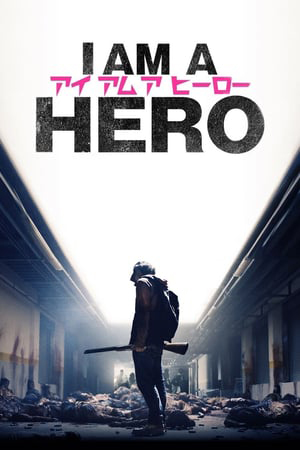 Yesterday I reviewed three of the movies I saw on Monday, July 23. Today I’ve written up my notes on the post-film question-and-answer sessions with the director of all three, Shinsuke Sato. All of what follows comes from my handwritten notes, and so may contain errors that crept in due to my hearing or transcription skills. Further, Sato spoke in Japanese, which was translated into either English or French depending on what language the questioner used, and while my French is competent enough that I caught most of the answers in the first two sessions, by the time the third session wrapped up it was near or past midnight.
Yesterday I reviewed three of the movies I saw on Monday, July 23. Today I’ve written up my notes on the post-film question-and-answer sessions with the director of all three, Shinsuke Sato. All of what follows comes from my handwritten notes, and so may contain errors that crept in due to my hearing or transcription skills. Further, Sato spoke in Japanese, which was translated into either English or French depending on what language the questioner used, and while my French is competent enough that I caught most of the answers in the first two sessions, by the time the third session wrapped up it was near or past midnight.
First came zombie-apocalypse horror film I Am a Hero. Sato was asked how the movie was accepted by the producers and backers, and he said that it was rare to have this sort of film in the mainstream in Japan. Since roughly 2000, TV stations have been financing films, and they prefer material aimed at a more general audience. This film was backed by Toho, who wanted to make something that could not be made by a TV station. It was a good fit for Sato, as he’d made the two live-action Gantz films with Toho a dozen years before.
Asked if it was important to him to be respectful of the manga, he said the manga was unique; the film ran the risk of coming off as a simple zombie movie. Sato wanted to make a zombie film a little unlike any made before, while the manga creator put a certain amount of pressure on him by asking him simply to make a zombie film he would like. Asked about how he came up with the idea of zombies with a personality (carrying on with what they were obsessed with in life), Sato said that was in the manga, although he imagined a few of his own for the film. He said it was important for him to make Japanese zombies, creatures in some way distinct from American zombies. Zombies often come as hordes, individuals indistinct from each other, but he wanted to have each be individual.
He was asked about an early scene in the film, when Hideo has to confront his girlfriend, Tekko, who has been turned into a zombie; and specifically how he created her uncanny movement. Sato noted that Tekko was a high jumper in the original, and that he wanted to capture that energy. As the first zombie to appear in the film, she would have a high impact. He said he used three people to get her across, the actress, a stunt double, and a contortionist who is in the Guinness World Records. Asked about the lack of narrative payoff for the character of Hiromi, Sato said he’d cut a scene at the end that would have explained she was a hybrid who was the key to curing the virus. He decided it was more important to keep the focus on Hideo’s character arc rather than ruin the flow with explanations.
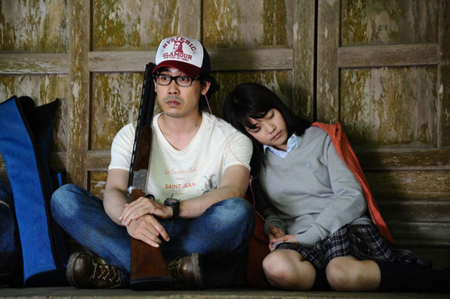 Asked if a sequel was possible, Sato said yes, he had the idea when he made the film the voyage could continue. Asked what the biggest challenge was in adapting a manga, he said it was how to fit everything into two hours, and to have it be new. Much inevitably would be missed, but he wants his movies to be films above all, and to be appreciated as films; he feels he can’t copy images from the manga, easy as it would be, because then the films would be cinematographically weak. Simply taking the original and cutting it down turns it into a digest of itself; he has to add new scenes. He noted in this case that the fight at the end, and specifically the final monster Hideo fights, is not in the original. He looked at the setting, tried to see what could be done with it, and worked from there.
Asked if a sequel was possible, Sato said yes, he had the idea when he made the film the voyage could continue. Asked what the biggest challenge was in adapting a manga, he said it was how to fit everything into two hours, and to have it be new. Much inevitably would be missed, but he wants his movies to be films above all, and to be appreciated as films; he feels he can’t copy images from the manga, easy as it would be, because then the films would be cinematographically weak. Simply taking the original and cutting it down turns it into a digest of itself; he has to add new scenes. He noted in this case that the fight at the end, and specifically the final monster Hideo fights, is not in the original. He looked at the setting, tried to see what could be done with it, and worked from there.
Asked what his next work would be, he said there was nothing he could say now; an announcement would come in autumn. Asked why an apparent bite didn’t turn Hideo into a zombie, he said the teeth didn’t penetrate Hideo’s skin, so the virus wasn’t transmitted. Asked whether the shopping-mall setting was a nod to Romero, he said it was an homage. The difference, he said, was that the mall-like structure in I Am a Hero is an outlet mall. You see a lot of those in Japan in the countryside, he explained, and they’re sites with a lot of roofs, thus giving the chance for fights to go up or down. The outlet mall seen in the film was actually located in Korea; he found regular malls in Japan he could use cheaply, but wanted specifically an outlet mall. The zombies in the movie are thus in fact Korean zombies. In answer to another question about an action Hideo took toward the end of the film, he observed that most Japanese don’t know the sensation of firing guns; Sato himself once asked around when he was in LA for a firing range where he could try shooting a gun, and found that firing as many shots as Hideo did would be physically exhausting. Hideo’s action was thus a sign of his exhaustion, a sign he was ready to die.
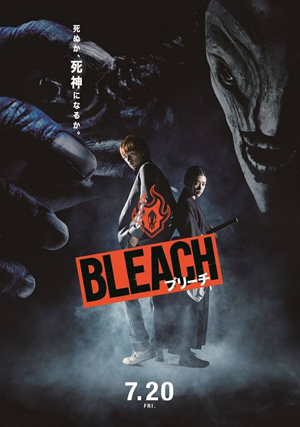 Finally, in answer to an audience question Sato said that he made this film out of a desire to make a zombie film. He then searched through a number of manga titles to find a story that appealed to him. He said it was easier to get financing for an adaptation than for an independent story, so it was easier for him to get a zombie film made if it was an adaptation of an already-existing work.
Finally, in answer to an audience question Sato said that he made this film out of a desire to make a zombie film. He then searched through a number of manga titles to find a story that appealed to him. He said it was easier to get financing for an adaptation than for an independent story, so it was easier for him to get a zombie film made if it was an adaptation of an already-existing work.
At the screening for Bleach, an international premiere, Sato was presented with a Special Achievement Award. After the film, he was asked (by Nicolas Archambault, one of the festival’s Directors of Asian Programming, who hosted all three screenings) if he felt intimidated or excited doing an adaptation. Sato said he felt pressure, as he knew the manga has a lot of fans. There were parts of the film very different from the manga, as he wanted to make something specific for the medium of film: “I hope it was not the Bleach you expected,” he said. He noted it was shot two years ago, and it took him a year to get the CGI done.
Asked how he transposed the action choreography from page to screen, he said he used to work as a scriptwriter originally, and imagined a lot of action. He worked with an action team and a map of one of the more significant locations, and shot a lot of angles and movement. He said after the film was edited he made a version on his own, with a few details changed — an independent version of Bleach.
Asked if he could, please, make a second arc of the manga, Sato said maybe. He noted that he’d originally planned to put more into the film, such as a focus on the conflicts between Shinigami and Hollows in the real world, but there was a lot to show. Asked which character was hardest to cast and why, he said the character of Byakuya Kuchiki. As the mood was important, and the character had to have the look of someone not of this world, he couldn’t use someone who was seen on TV all the time. He ended up with an actor named Miyavi, a musician who had been in Angelina Jolie’s Unbroken and Kong: Skull Island; this was his first Japanese film. Sato observed that costumes could look difficult in general, as cosplayers would understand.
Asked which character he wanted to bring to the screen the most, he said Ichigo and Rukia, but also spoke about a character who was the series’ mascot but who had to be cut, saying it was a big decision (I am not sure whether there was irony there lost in translation). He was asked why he imagined the Hollows the way he did, with large mask-like faces; he said he sought a lot of ways to show them, and specifically did not want to take away the Japanese spiritual aspect of the mask, which came from the manga and which he thought represented the Japanese character of the creatures.
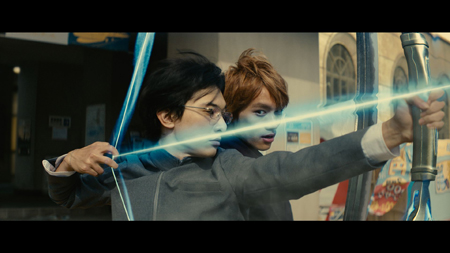 Asked about distribution by an audience member who promised he would go to Japan if he had to in order to see the movie again, Sato said he couldn’t say. It was a Warner Brothers production, so it would be shown outside Japan, and he promised he’d try to make sure the questioner wouldn’t have to pay for a plane ticket. In response to another audience question, he said that he didn’t make the actors watch the anime, though some of them did; he gave them the script and explained their role in the film world. He hasn’t had much interaction with the creator of Bleach, Tite Kubo, who just recently finished the long-running series. Sato sent him the script, which he liked, and he gave Sato his ideas; he saw it at the first screening with his family.
Asked about distribution by an audience member who promised he would go to Japan if he had to in order to see the movie again, Sato said he couldn’t say. It was a Warner Brothers production, so it would be shown outside Japan, and he promised he’d try to make sure the questioner wouldn’t have to pay for a plane ticket. In response to another audience question, he said that he didn’t make the actors watch the anime, though some of them did; he gave them the script and explained their role in the film world. He hasn’t had much interaction with the creator of Bleach, Tite Kubo, who just recently finished the long-running series. Sato sent him the script, which he liked, and he gave Sato his ideas; he saw it at the first screening with his family.
Asked whether the actors did their own stunts, Sato said he asked some actors to do their own stunts, while other stunts were better with CGI. Generally if you can see their face it’s the real actor, though. The actors were asked to train for a few months. Miyavi was actually very good, and apparently continued his training even after the film wrapped. Sato was asked how he came to make this movie, and explained that he decided what sort of movie he wants to make and then looks for a similar manga. He’d like to do a film that takes place in space, or a historical fantasy with a Japanese setting; he’ll see what he can find in manga.
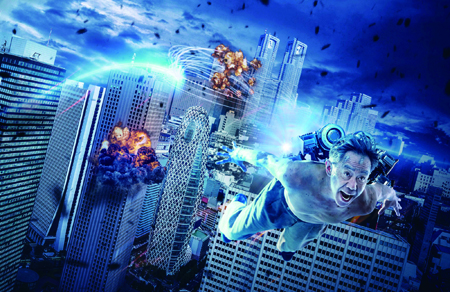 After Inuyashiki, Archambault asked Sato about his actors. Noritake Kinashi, who played Ichiro Inuyashiki, is better known as a humorist, while Takeru Satoh is most often cast as a hero. What led Sato to these casting decisions? Sato said Inuyashiki needed an actor of a certain age, and he wanted someone funny; Kinashi’s younger than the role, and was made up as an older man. Satoh is a big star in Japan who has never played a villain, and Sato didn’t think he’d take this part but was pleasantly surprised. Normally he plays nice roles in love stories, and Sato here deliberately placed him in an inverse role; he thought it worked, and Satoh himself was happy. Archambault noted the performances were fantastic and congratulated him on the choices, and Sato said that he liked the contrast of the two.
After Inuyashiki, Archambault asked Sato about his actors. Noritake Kinashi, who played Ichiro Inuyashiki, is better known as a humorist, while Takeru Satoh is most often cast as a hero. What led Sato to these casting decisions? Sato said Inuyashiki needed an actor of a certain age, and he wanted someone funny; Kinashi’s younger than the role, and was made up as an older man. Satoh is a big star in Japan who has never played a villain, and Sato didn’t think he’d take this part but was pleasantly surprised. Normally he plays nice roles in love stories, and Sato here deliberately placed him in an inverse role; he thought it worked, and Satoh himself was happy. Archambault noted the performances were fantastic and congratulated him on the choices, and Sato said that he liked the contrast of the two.
Asked how he did the final fight of the two characters above Shinjuku, Sato said it was difficult. He got base images and added CGI, but (according to my scrambly notes) Shinjuku allowed him to use certain places for only a few minutes at a time in filming. Asked about the way the film handled the theme of bullying of young and old, Sato said it was a theme also present in his earlier film Gantz. It wasn’t a theme about which he wanted to make a statement, merely something he wanted to show, and to show how people react to it. Asked about his relationship with Warner Brothers and whether he would work in Hollywood, Sato said there had been discussions, and American producers were surprised by the budgets he’d had to work with. Sato said that he was a Japanese director who makes films in his home with Japanese themes, but if Hollywood wanted to collaborate he’d consider it.
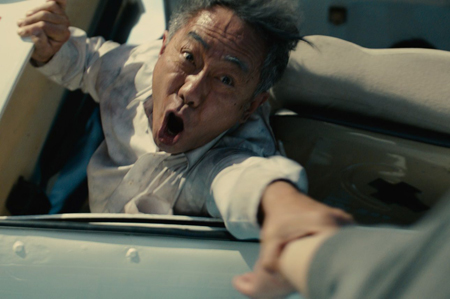 To a question from the audience that I didn’t catch, Sato said that the Japanese market likes young stars, and the audiences are often young. Having someone older than him on screen made this film feel a bit closer to him. He was asked again about the challenges of translating the manga to film, and again answered it was important to make the film a film. In this case, as with Gantz, the second part of the film was very different from the original. Asked about the origin of the cyborg characters, not really explored much in the film, he said it was given more depth in the manga, where it’s specified that the mysterious object falling to Earth was an alien spaceship; they rebuilt Inuyashiki and Hiro to keep their presence secret. He found the explanation was too long to get across in the film, and so cut it. Finally, asked whether a post-credit sequence was a hint that a sequel was possible, he explained it was simply a wink to the Marvel films, and that the story really was over.
To a question from the audience that I didn’t catch, Sato said that the Japanese market likes young stars, and the audiences are often young. Having someone older than him on screen made this film feel a bit closer to him. He was asked again about the challenges of translating the manga to film, and again answered it was important to make the film a film. In this case, as with Gantz, the second part of the film was very different from the original. Asked about the origin of the cyborg characters, not really explored much in the film, he said it was given more depth in the manga, where it’s specified that the mysterious object falling to Earth was an alien spaceship; they rebuilt Inuyashiki and Hiro to keep their presence secret. He found the explanation was too long to get across in the film, and so cut it. Finally, asked whether a post-credit sequence was a hint that a sequel was possible, he explained it was simply a wink to the Marvel films, and that the story really was over.
Sato concluded the night by observing that after he made Bleach it took him over a year to do the CGI; with what he learned from that, he was able to do this one, meaning the two films are twins in his mind.
Find the rest of my Fantasia coverage here!
Matthew David Surridge is the author of “The Word of Azrael,” from Black Gate 14. You can buy his first collection of essays, looking at some fantasy novels of the twenty-first century, here. His second collection, looking at some fantasy from the twentieth century, is here. You can find him on Facebook, or follow his Twitter account, Fell_Gard.